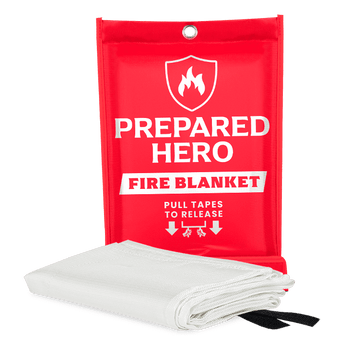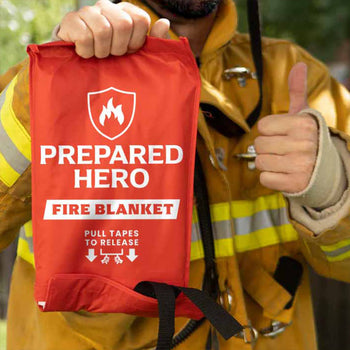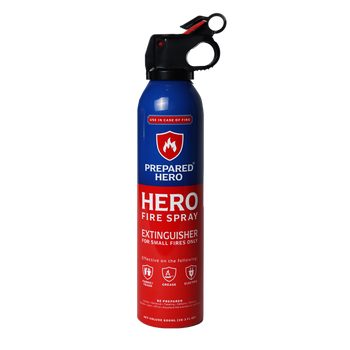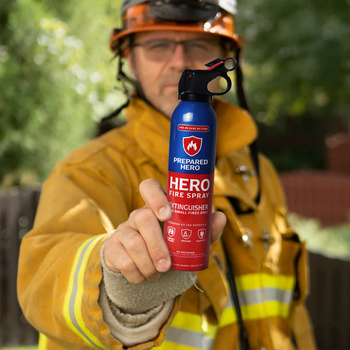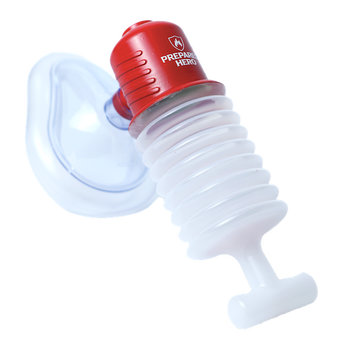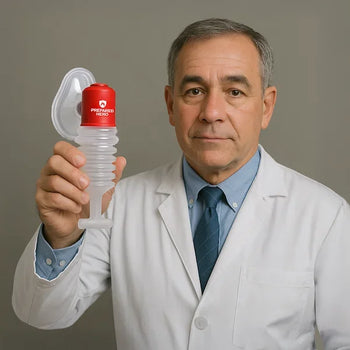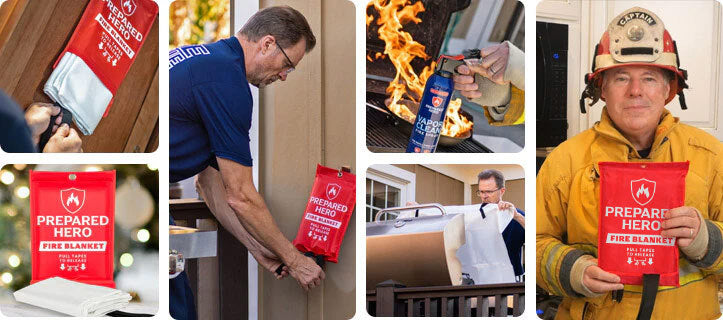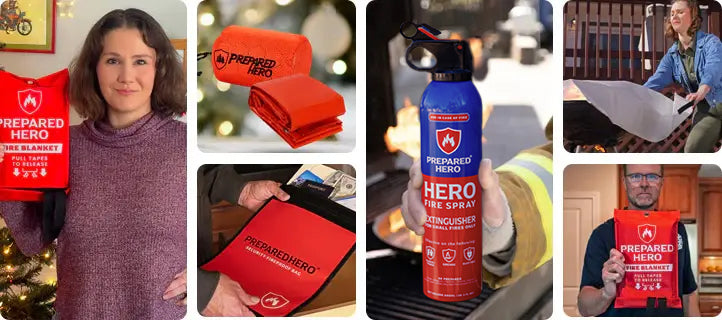Where you put your smoke detectors matters just as much as installing them. Proper placement makes sure they can detect...
Ever wondered what the letters and numbers on fire extinguishers mean? You're not alone. Understanding these labels makes a huge difference when choosing the right extinguisher for an emergency. From the basic letters to the numerical ratings that show how effective an extinguisher is, there's more to these symbols than you might think.
In this article, we’ll explain how fire extinguishers work, what the letters tell you, and why the numbers matter. Whether you’re at home, work, or out in the garage, knowing which extinguisher to grab helps you put out a fire quickly. Keep on reading to get the full scoop on fire extinguisher letters and numbers.
How Do Fire Extinguishers Work?

Fire extinguishers work by attacking one or more elements of the fire triangle—cooling the heat, smothering the fuel, or cutting off the oxygen—making it easier to put out the fire safely. Here’s a quick look at how different fire extinguisher types work:
Water Fire Extinguishers
Water fire extinguishers work by cooling the burning material, reducing the heat, and slowing down the fire’s spread. Water is released under pressure from the extinguisher, which cools the fire until it’s out. However, they shouldn’t be used on electrical, metal, or grease fires because water can make them worse.
Water Mist Fire Extinguishers
Water mist fire extinguishers release fine mist, cool the fire, and reduce the oxygen available to the flames. They’re safe for use on electronics and sensitive materials because they don’t leave residue behind.
Wet Chemical Fire Extinguishers
These extinguishers typically use potassium to lower the temperature of the oil and form a soapy layer that suffocates the fire and prevents it from reigniting.
Powder Fire Extinguishers
They work by coating the fuel, separating it from oxygen, and cooling it down. They’re one of the most versatile fire extinguishers.
Foam Fire Extinguishers
Foam extinguishers create a barrier between the flame and fuel. As a result, they cool down the fire and cut off its oxygen supply.
Carbon Dioxide Fire Extinguishers
They work by displacing oxygen and suffocating the fire. Carbon dioxide fire extinguishers are commonly used for electrical fires because they don’t leave residue and are safe for electronic equipment.
What Do the Letters On Fire Extinguishers Indicate?
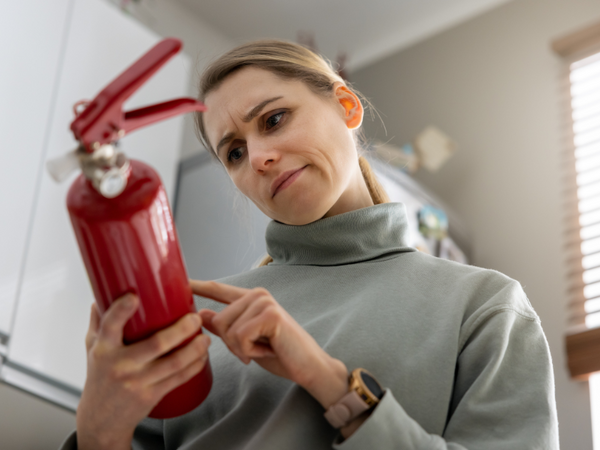
The letters on fire extinguishers indicate the types of fires the extinguishers are designed to handle.
For one, the letter A indicates that the fire extinguisher can put out fires involving common materials like wood, paper, and fabric. These are typical household or office fires you can often put out with water-based extinguishers. On the other hand, the letter B is for fires involving flammable liquids and gases like gasoline and propane. These fires require extinguishers that use foam, CO2, or powder because water can make them worse.
Meanwhile, the letter C indicates that the extinguisher is for electrical fires. These fires are caused by electrical equipment, like faulty wiring or malfunctioning appliances. Class C extinguishers don’t conduct electricity, making them safe to use on live electrical fires. Class D is for combustible metal fires. These are unique and require specialized extinguishers that use dry powder to handle the high-intensity heat. Lastly, Class K is for grease fires.
Each letter indicates what kind of fire the extinguisher is meant for so you can use the right one for the job.
What the Letter A Indicates

The letter A means the fire extinguisher can put out a Class A fire. Class A fire extinguishers are marked with a green triangle and the letter A.
Class A fires are the most common type of fire. They involve fire hazards like wood, paper, fabric, and plastic. These are everyday items found in homes, offices, or outdoors. Class A fires can start in many ways. For instance, a candle falls onto paper, a spark from an outlet lands on clothes, or a campfire spreads to dry grass. They can also happen in cars, where things like upholstery or documents catch fire because of excess heat or an overheated engine.
In addition, Class A fires spread quickly because the materials fueling them are often spread out. What starts as a small flame can quickly grow into a big blaze, engulfing a whole room or outdoor area. The smoke from these fires can also be toxic, which makes the situation even more dangerous. Even though we often think that Class A fires are manageable, they can cause serious damage if not extinguished quickly.
Class A fire extinguishers usually use water to put out these fires. Water works by cooling down the fuel and removing the heat, which are elements of the fire triangle. Some Class A extinguishers also use water mist instead of a stream, which is more effective in certain places like hospitals or libraries, where water can damage the equipment. Wet chemicals (like potassium solutions) can also lower the fire’s temperature and prevent it from spreading. Plus, other types of extinguishers, like powder and foam, can handle Class A fires. Powder creates a barrier between the fire and fuel, while foam cools the fire and blocks oxygen.
What the Letter B Indicates

The letter B means the fire extinguisher can put out a Class B fire. Class B extinguishers have a red square with a B on it.
Class B fires involve flammable liquids and gases like gasoline, paint thinner, propane, and butane. They can start from spills, leaks, or vapors coming into contact with heat, such as a spark or open flame. For example, a gasoline spill near a hot stove can ignite quickly. These fires can spread fast in your house, producing intense heat and toxic fumes that can be life-threatening.
This type of fire usually occurs in places like kitchens, garages, and workshops, where flammable liquids and gases are used or stored. Kitchens are especially at risk since cooking alcohol or cleaning products can catch fire easily. Plus, garages and workshops are dangerous because of gasoline, paint, and solvents. In industrial settings, improper handling of flammable liquids can cause fires that spread fast, endangering both people and property.
Class B fire extinguishers are made to handle fires from liquids like gasoline and oil. They use agents like foam, carbon dioxide, powder, and water mist. Foam creates a thick barrier and cuts off the oxygen to the fire. Similarly, carbon dioxide displaces the oxygen and puts out the fire without leaving residue. On the other hand, powder extinguishers coat the fire, smother it, and prevent reignition. Lastly, water mist uses tiny droplets to cool the fire and lower oxygen levels without leaving residue behind.
What the Letter C Indicates

The letter C means the fire extinguisher can put out a Class C fire. A Class C fire extinguisher has a blue circle with a C inside.
Class C fires are caused by electrical issues, like faulty wiring or overloaded outlets. They can spread quickly and be hard to notice until it’s too late. These fires often start from appliance malfunctions. They’re common in kitchens, living rooms, offices, and workshops—places full of electrical devices.
Class C fires are dangerous because they can escalate quickly. Plus, water makes them worse. In particular, regular water conducts electricity and can make the situation worse. The best way to stop these fires is to turn off the power and use a Class C fire extinguisher, vapor fire spray, or dry fire spray.
Class C fire extinguishers are designed to safely put out electrical fires. One common type uses carbon dioxide. It works by displacing oxygen, smothering the fire, and cooling it since carbon dioxide is cold when released. It also leaves no residue, making it ideal for electronics.
Another type of Class C fire extinguisher uses powder like sodium bicarbonate or potassium bicarbonate. This powder coats the fire and depletes its oxygen supply. Powder extinguishers are also versatile because they work on Class A, B, C, and D fires. However, the powder can be harmful to breathe in, so use a mask in small spaces. Another option is water mist, which uses deionized water that doesn’t conduct electricity. It cools the fire and prevents it from spreading.
What the Letter D Indicates

The letter D means the fire extinguisher can put out a Class D fire. Class D fire extinguishers have a yellow star symbol with the letter D inside.
Class D fires are caused by combustible metals like magnesium, lithium, sodium, and aluminum. Unlike regular fires, metal fires burn at extremely high temperatures and can react violently with air or water, which makes them more dangerous. When these metals are exposed to heat, sparks, or flames, they can ignite quickly and cause intense fires that may explode.
These fires are common in industrial settings like factories, foundries, welding shops, and recycling facilities, where reactive metals are processed. For example, welding sparks or grinding alloys can ignite metal dust. Plus, molten metal in a foundry can spill and cause a fire when it reacts with water or air.
Class D fires are tough to put out because common extinguishers don’t work on them. In fact, water or foam can make the fire worse. Hence, you need special dry powder extinguishers to fight these fires safely. The dry powder forms a barrier between the metal and oxygen, cutting off the fire’s supply and reducing its intensity.
What the Letter K Indicates

The letter K means the fire extinguisher can put out a Class K fire. Class K fire extinguishers come with a black hexagon with the letter K inside it.
A Class K fire is a fire fueled by cooking oils, fats, or grease. These types of fires happen when oil gets too hot and ignites. The fire can spread quickly and burn intensely, making them difficult to control. A big risk with Class K fires is that water can make them worse.
Grease fires usually start in kitchens, both at home and in commercial settings. Cooking oil can heat up fast, especially during deep frying. If the oil gets too hot or food is added improperly, it can ignite in seconds. Grease buildup on stovetops or ovens can also catch fire. Find out if you can still use your oven after it catches fire here.
These fires are dangerous because the heat can cause severe burns, and the smoke can lead to breathing problems. In worst cases, Class K fires can grow out of control and cause serious damage. The costs, from medical bills to property damage, can be huge.
Class K fire extinguishers contain wet chemicals like potassium acetate, potassium carbonate, and potassium citrate. These chemicals cool the oil below its ignition point and create a soapy blanket over the oil, stopping the fire from getting oxygen and reigniting. Unlike water, they won’t cause the fire to spread. You can also use Class K extinguishers on electrical fires involving grease, like if your electric stove ignites because of grease.
What Do the Numbers on Fire Extinguishers Indicate?

The numbers on fire extinguishers indicate their effectiveness in fighting specific types of fires.
For one, the numbers on Class A fire extinguishers show how much fire they can handle based on the equivalent amount of water they can put out. The higher the number, the larger the fire it can fight. Meanwhile, the numbers on Class B fire extinguishers indicate how much area the extinguisher can cover when fighting fires involving flammable liquids or gases. Again, a higher number means it can cover a larger area.
On the other hand, Class C fire extinguishers don’t have numbers because their main concern is electrical safety. These extinguishers are rated based on their ability to prevent electrical shock when used on energized equipment rather than the size of the fire. Similarly, Class D fire extinguishers don’t come with numbers. Instead, they’re rated based on the amount of extinguishing agent needed and how to use it to control the fire.
The same goes for Class K fire extinguishers. According to the National Fire Protection Association (NFPA), grease fire extinguishers are only tested on a single-size fire source. Hence, there’s only one outcome, which is pass or fail.
What the Numbers on Class A Fire Extinguishers Indicate

The numbers on Class A fire extinguishers tell you how much fire they can put out. In particular, the number before the A shows how much water the extinguisher is equal to. Each A rating equals 1.25 gallons of water. So, a 10A extinguisher can handle a fire that will require 12.5 gallons of water (10 x 1.25) to put out.
A higher number means the extinguisher can put out a bigger fire. For example, a 40A rating means the extinguisher can fight a fire that needs 50 gallons of water to extinguish. These numbers give you an idea of how powerful the extinguisher is and how large of a Class A fire it can handle. The higher the number, the more effective the extinguisher is for fighting larger fires.
What the Numbers on Class B Fire Extinguishers Indicate
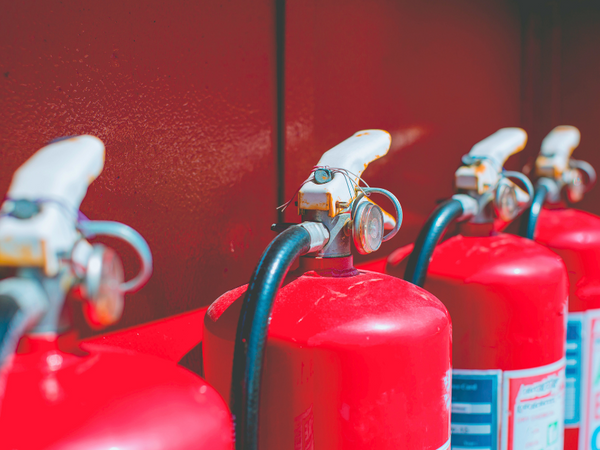
The numbers on Class B fire extinguishers show how much area they can cover. Each number represents the square footage the extinguisher can handle for a Class B fire, which involves flammable liquids and gases. For example, a 10B extinguisher can put out a fire that covers 10 square feet. A 20B extinguisher can cover 20 square feet, and so on.
The higher the number, the bigger the fire the extinguisher can put out. This helps you know if the extinguisher is strong enough for the size of the fire you might be dealing with.
What the Numbers on Class C Fire Extinguishers Indicate

According to the NFPA, Class C fire extinguishers don’t have numbers like Class A or B extinguishers. With Class C extinguishers, it's not about the size of the fire. It’s about the risk of electrical shock. Class C extinguishers are designed for fires involving electrical equipment, and the key factor here is the conductivity of the extinguisher, not its power to cover a specific area.
For a fire extinguisher to get a Class C rating, it’s tested to make sure that no electrical current will flow through it when you use it on live equipment. So, instead of a number, experts just need to know that a Class C extinguisher is safe to use around electrical fires without getting shocked.
What the Numbers on Class D Fire Extinguishers Indicate

Class D fire extinguishers don’t have numerical ratings because they’re used for fires involving combustible metals like magnesium, sodium, lithium, and potassium. These fires are way different from regular ones, so it’s more complicated to put them out.
Instead of numbers, Class D extinguishers are rated based on the amount of extinguishing agent needed and how that agent should be applied to control the fire. Since each metal burns and reacts differently to various materials, the focus is on using the right type of agent and the proper technique to handle the fire safely. So, instead of a number to measure its power, Class D extinguishers rely on specialized information about the fire and the best way to put it out.
What the Numbers on Class K Fire Extinguishers Indicate

Class K fire extinguishers don’t have numerical ratings, either. Like metal fire extinguishers, they don’t have numerical ratings because they are specifically designed for fires involving vegetable oils and animal fats, like those used for deep fryers. Instead of a number, these extinguishers are tested on a single fire source. To test them, a fire is started in a deep fat fryer, and the extinguisher must put it out without splashing or reigniting the oil.
Since the test focuses on one type of fire, there’s no need for a number to show how much fire the extinguisher can handle. The focus is more on making sure the extinguisher works properly in the specific situation it’s designed for instead of measuring it by square footage.
What Does 1A:10B:C Mean?
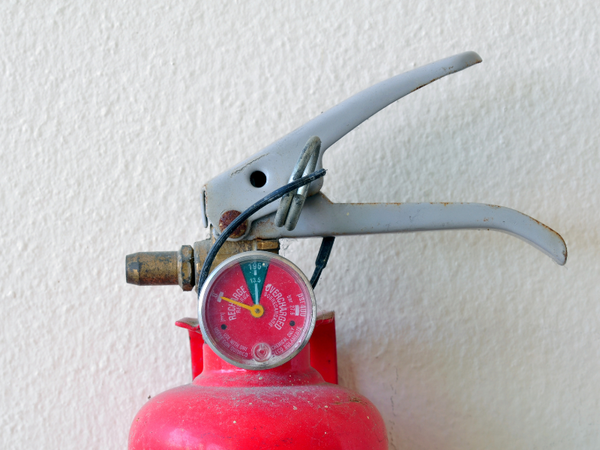
The rating 1A:10B:C means the fire extinguisher can put out Class A, B, and C fires. In particular, 1A means the extinguisher has the equivalent of 1.25 gallons of water to fight Class A fires caused by ordinary combustibles like wood, paper, and fabric. On the other hand, 10B means the fire extinguisher can put out up to 10 square feet of a Class B fire, which involves flammable liquids and gases. Lastly, the C means you can use the extinguisher on electrical fires without getting electrocuted.
Fire extinguishers can have multiple ratings, which makes them suitable for different types of fires. For example, the rating discussed above is for a multi-purpose ABC fire extinguisher. It’s a good choice for homes, offices, and other places with different risks and hazards associated with fire.
What Does 10A Mean on a Fire Extinguisher?

The 10A on a fire extinguisher means that it can handle Class A fire that needs 12.5 gallons of water to put out. So, a 10A extinguisher can tackle a large fire involving ordinary materials like wood, paper, or fabric. The higher the number, the bigger the fire it can extinguish. This is useful when choosing the right size extinguisher for your home or workplace.
What does 5B Mean on a Fire extinguisher?

The 5B on a fire extinguisher means that it can put out a Class B fire that covers five square feet. This rating lets you know if the extinguisher is strong enough to manage a Class B fire. If you're using it in places with flammable liquids and gases, the 5B rating gives you an idea of how much it can cover if a fire breaks out.
Conclusion
The letters and numbers on fire extinguishers tell you exactly what type of fire the extinguisher can handle and how well it works. Whether it’s a grease or an electrical fire, knowing what each letter and number means helps you act quickly during an emergency.
While fire extinguishers are essential for your safety, they aren’t the only tools you should have on hand. Keeping fire blankets and fire sprays around is also a great idea, especially in high-risk areas like the kitchen and garage. Stay prepared, hero!


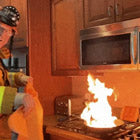 Fire
Fire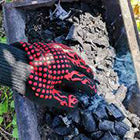 Safety
Safety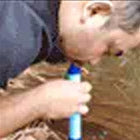 Survival
Survival Protection
Protection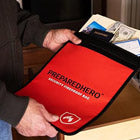 New
New
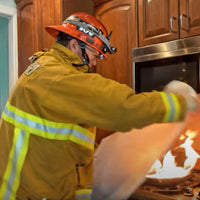 Fire
Fire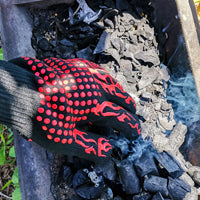 Safety
Safety Survival
Survival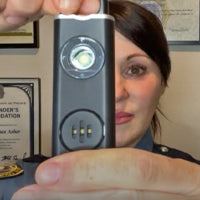 Protection
Protection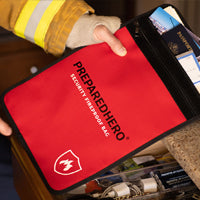 New
New